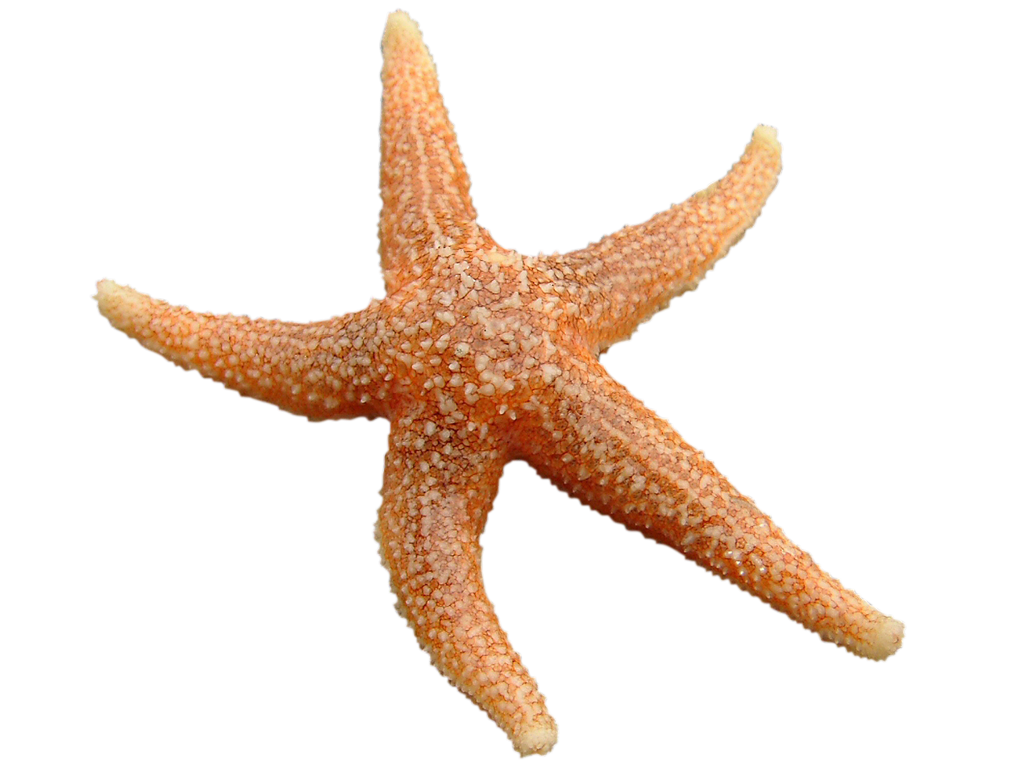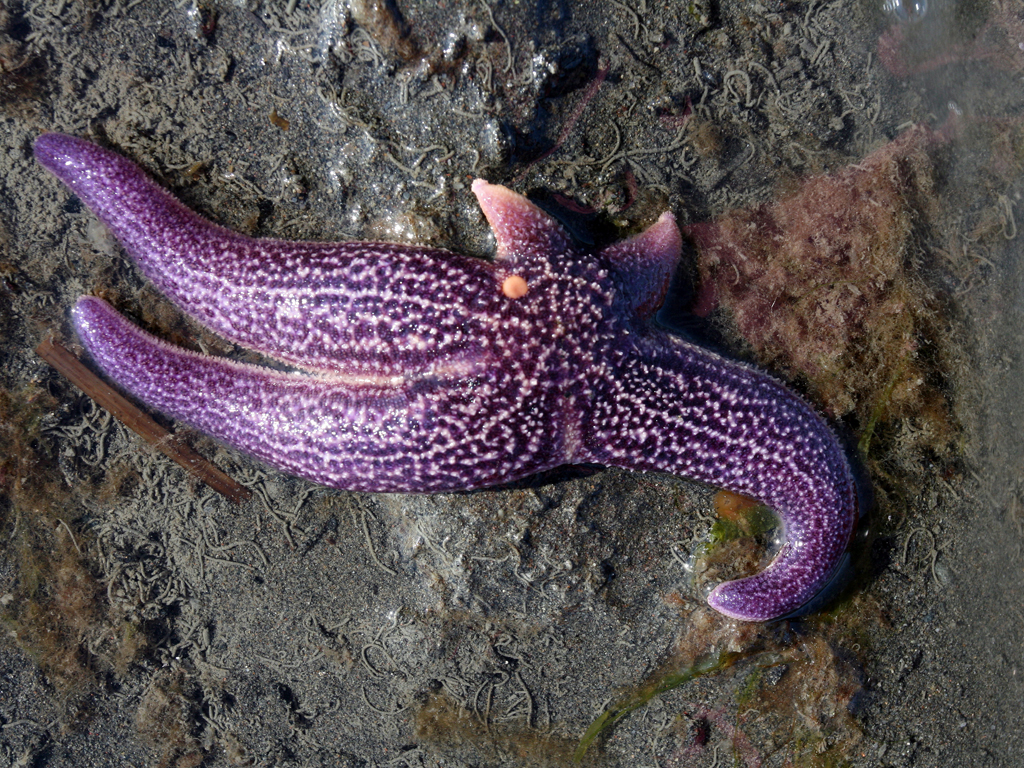Common Starfish
Asterias rubens

Folds its stomach out through its mouth
The common starfish is a voracious but slow predator. Although it moves slowly, it has no problem getting food, as it mainly eats animals that are attached to a surface, such as mussels or barnacles. On the underside of the arms, the starfish has lots of little tube feet, with suction cups on the end. To eat a mussel, the starfish sucks its tube feet onto the shell of the mussel then pulls the shell open with amazing force. It then extends its stomach through its mouth, which is on the underside of its body, and wedges it into the mussel shell. The stomach secretes substances that break down the mussel. Then the starfish can suck the stomach and the broken-down mussel back in through its mouth.
The underside of an Common starfish, with its mouth in the middle.
Photo: Espen-Rekdal-CC-BY
A starfish in the middle of eating a sea urchin.
Photo: Derek-Keats-CC-BY
Arms with eyes and sexual organs
At the end of each arm is an eye, which can distinguish between light and darkness. Each arm also contains the sexual organs of the starfish, called gonads. When common starfish reproduce, males release sperm and females release eggs into the open water. The eggs are fertilised, and the larvae that hatch float around for a few weeks. They then develop into tiny starfish of just a few millimetres, and stay on the bottom.
Usually the common starfish has five arms, but it can sometimes have either more or fewer. If an accident occurs and the starfish loses one of its arms for some reason, it can grow it back again!

Photo: Dean-Franklin-CC-BY
Distribution in Sweden

The west coast.
White marking = Distribution
Threat based on the Red List

Trade regulations
CITES: Not listed.